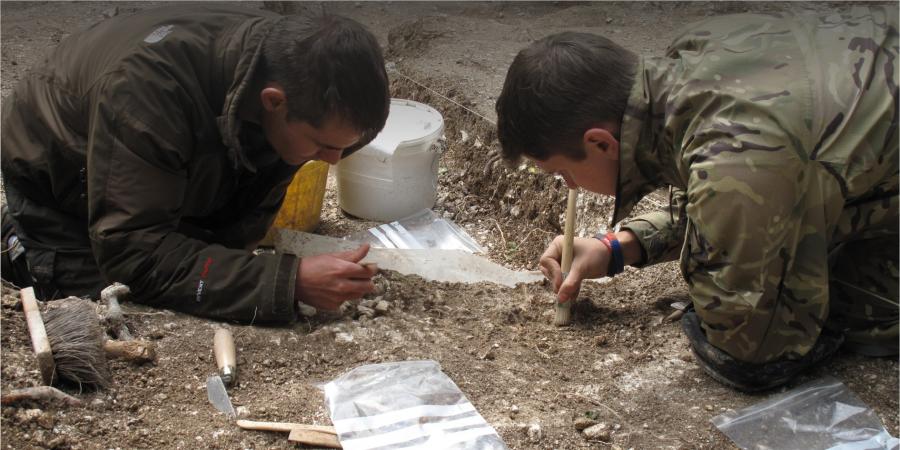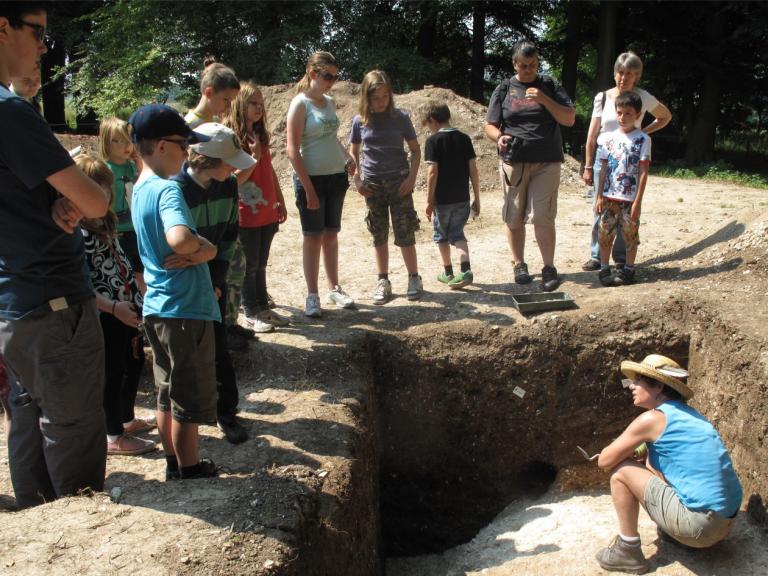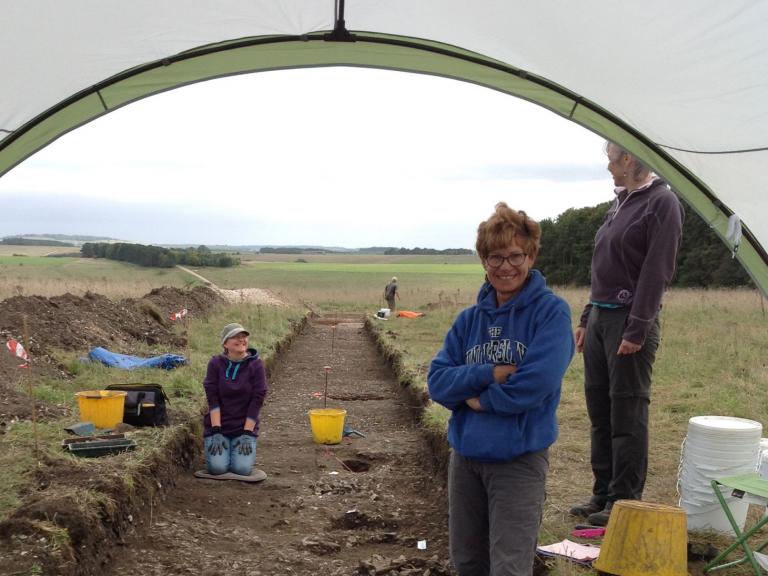Salisbury Plain is one of the richest archaeological landscapes in Britain – with 6000-year-old settlement and burial sites to 20th-century military remains.
The Challenge
Operation Nightingale is a military initiative developed to use archaeology as a means of aiding the recovery of service personnel injured in recent conflict, particularly in Afghanistan.
The huge range of sites on Salisbury Plain, many of them remarkably well-preserved within the Ministry of Defence training area, has provided an ideal opportunity for Operation Nightingale to engage in archaeology. For over two decades Wessex Archaeology has been helping the Defence Infrastructure Organisation and its predecessors protect sites on Salisbury Plain, excavating and recording them where necessary, for example in advance of construction of new hard tracks which allow modern tanks and heavy equipment to be transported across the Plain.
One of the major threats to archaeological remains on Salisbury Plain is not military manoeuvres, but burrowing animals. Over recent years increasing damage has been caused to prehistoric burial mounds and other important monuments by badgers. Trying to exclude these animals from certain sites by fencing is costly and in some cases, has proved ineffective.
This was the case at Barrow Clump, a large 4000-year-old Early Bronze Age burial mound, with earlier Neolithic layers beneath and a 6th-century AD Anglo-Saxon cemetery over the top. Continuing burrowing was bringing human bones and grave-goods such as spearheads and glass beads to the surface, and this would eventually have led to destruction of this important monument, which had already been placed on Historic England’s ‘Monuments at Risk’ register.
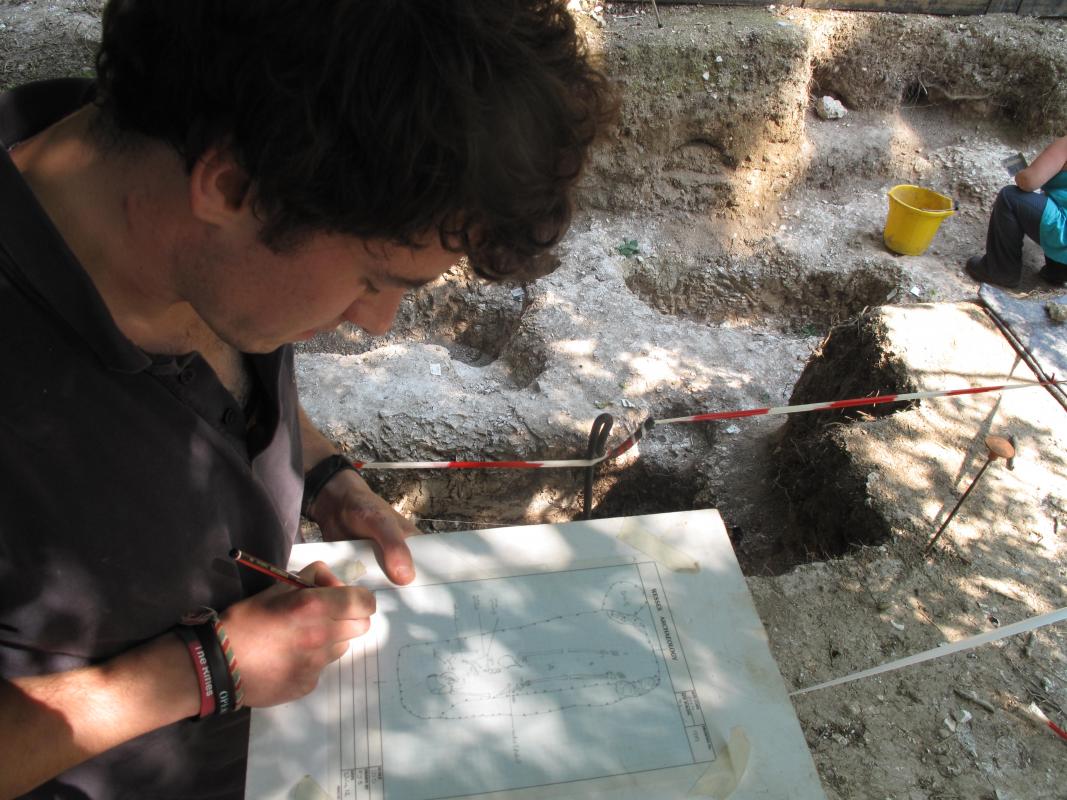
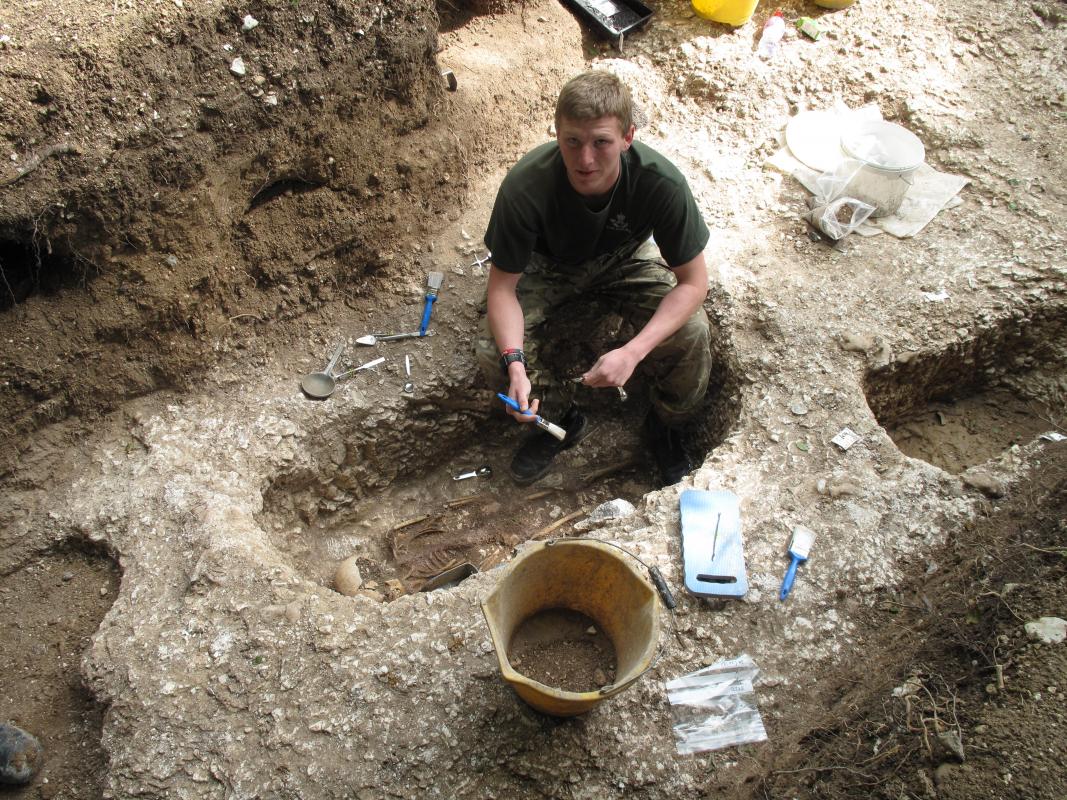
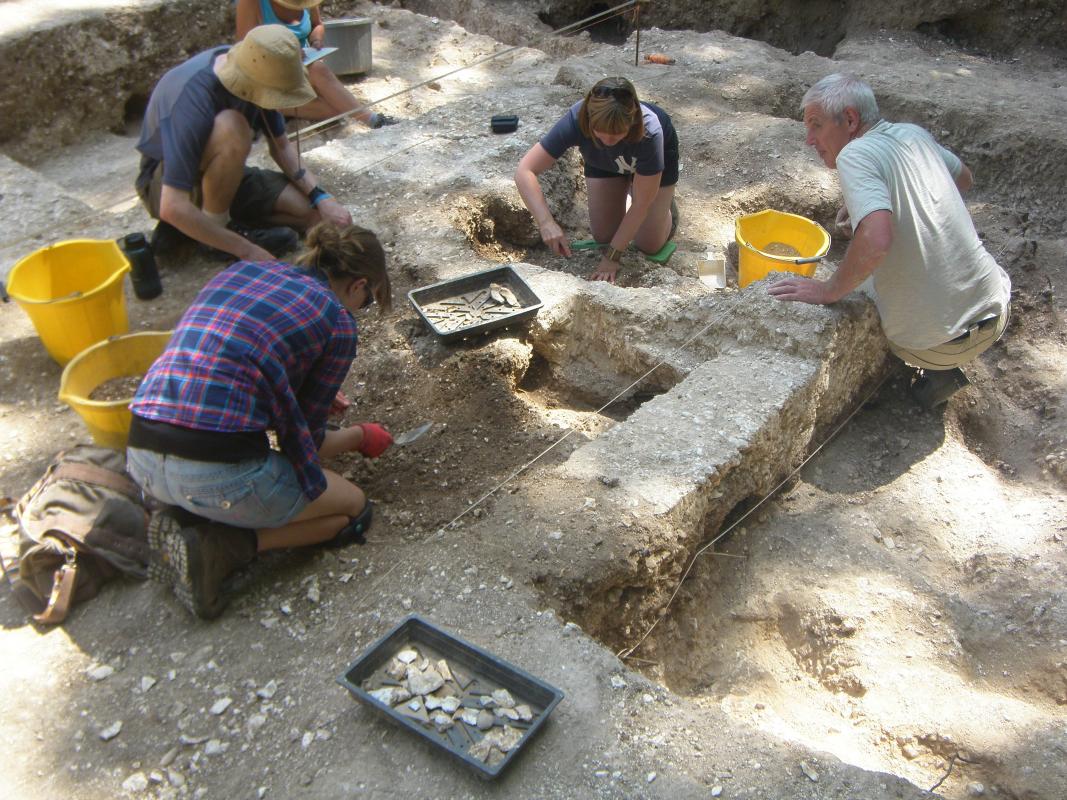
Our Approach
Wessex Archaeology has been involved over many years in undertaking condition surveys of monuments, as well as evaluations and excavations where required. In 2011 it was invited by Defence Infrastructure Organisation to organise and run an excavation at Barrow Clump, after it became clear that protection measures against badger damage had failed. This was aimed at recovering and recording all the Anglo-Saxon burials threatened by animal burrowing, as well investigating the Early Bronze Age burial mound and earlier remains.
Importantly, the month-long excavations, which took place annually between 2012−2014, were to be done in conjunction with Operation Nightingale, providing training opportunities and a positive team experience for all those involved.
Wessex Archaeology’s role in this project has involved organising and supervising the excavations, co-ordinating with a variety of military and civilian organisations, and developing and running a very successful Heritage Lottery-funded community project which ran in parallel with the archaeological work. This has been followed by subsequent analysis of the human bone and finds which will lead to publication of the results of the archaeological project.
75 Anglo-Saxon graves excavated
50% of the Bronze Age burial mound investigated
30 military personnel involved in the project
Our Results
Neolithic struck flints and pottery, antler tools and stone hammers indicated settlement on the site up to 4000 years ago, while two superimposed Early Bronze Age burial mounds were investigated, showing a complexity of remains rarely found anywhere. However, the network of animal burrows throughout showed the level of damage being sustained by the archaeological remains.
Damage was also evident to many of the Anglo-Saxon graves, but enough survived to reveal a great deal about the lives of the people buried there, and the weapons, jewellery and personal items that accompanied them.
The innovative Barrow Clump project has achieved national recognition and been nominated for several awards, as well as being the subject of one of the most viewed Time Team programmes on Channel Four. Its success has provided a template for a series of similar projects which have continued since, involving the Ministry of Defence, Operation Nightingale and Wessex Archaeology.
